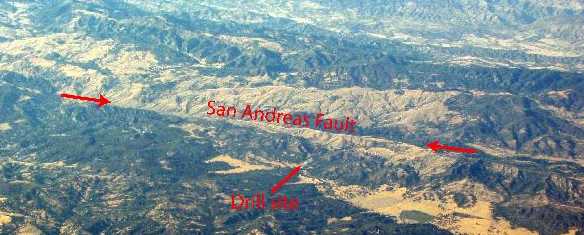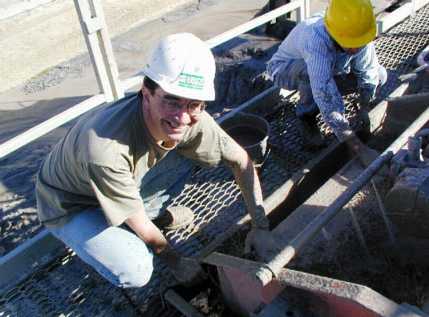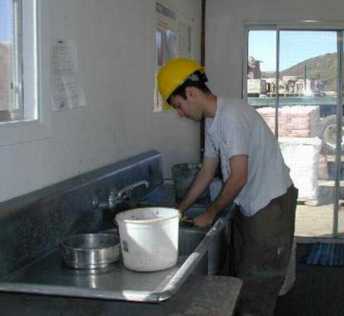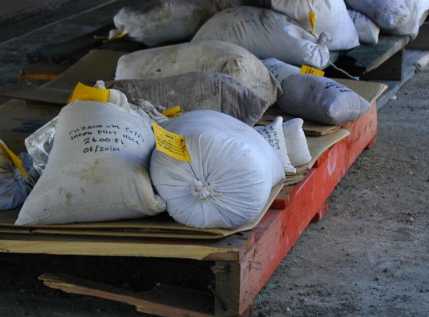 Photo Courtesy SAFOD Team |
 Photo Courtesy SAFOD Team |
Matthew A. d'Alessio, Ann E. Blythe, and Roland Bürgmann
| Project Summary
The San Andreas Fault Observatory at Depth (SAFOD) is located 1.8 km away from the San Andreas fault near the town of Parkfield, California. In June and July 2002, the SAFOD team drilled a 2.1 km deep pilot hole and our group helped collect samples of borehole cuttings at regular intervals during drilling. We will analyze these samples using the apatite fission-track and U/Th-He thermochronometers with the goal of reconstructing the long-term thermal history of the region. With such a technique, we may be able to observe changes in the paleo-heat flow at the onset of faulting along the San Andreas. These calculations will complement present day measurements of surface heat flow and help us resolve the ongoing debate about fault strength that hinges in part on frictional heat generation along active faults. |
More About SAFOD |

On the Drill Site..



| Steve Hickman (USGS) and Matthew d'Alessio collect cuttings from the "mud shaker." It's a messy job and must be done round the clock, but it's a lot of fun! | Matt washes the cuttings in the onsite science trailer. | Bags of cuttings are left to dry in the shade. |
Project Status
12 July 2002 - 13 July 2002
SAFOD Pilot Hole drilling and on-site collection of cuttings underway. Samples from surface exposures down to 2164 m (7100 feet) will be analyzed.
15 March 2003
We have successfully separated apatite and zircon crystals from 18 samples from the SAFOD Pilot Hole. Ann Blythe (USC) is preparing apatite samples for shipment to a reactor for fission-track analysis. She will soon begin U/Th-He analysis. David Kirschner (Saint Louis University) and his colleagues will analyze zircon crystals from samples where enough zircon was recovered.
1 September 2003
First (U-Th)/He ages! Within the Salinian granitic rock just below the granitic-sediment contact, we have He ages of about 20 Ma. Samples from the bottom of the hole have ages close to 1 Ma, but are not completely reset.
February 2004
Read our GRL paper to be published in the special section on the SAFOD Pilot Hole.